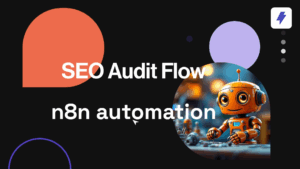In the ever-evolving landscape of the digital age, Artificial Intelligence (AI) is revolutionizing the way we work and live. One area where AI is making significant strides is in content editing jobs. Traditionally, content editing was a meticulous and time-consuming process carried out by human editors. However, with advancements in tech, AI is now playing a pivotal role in content editing jobs. It is transforming entire industries and creating new opportunities for professionals.
Table of Contents
ToggleThe Evolution of Content Editing
Content editing has long been a crucial aspect of the publishing industry. Traditionally, human editors were responsible for reviewing and refining written content, a process that demanded a keen eye for detail.
The advent of the digital era brought about a surge in the demand for content. Online platforms, blogs, and social media channels becoming primary outlets for information dissemination. This surge, coupled with the need for real-time content creation, posed a challenge for traditional editing processes. This is where AI stepped in.
If you’re looking to make the most out of AI, here are a few ChatGPT Jobs that are rising now.
The Role of AI in Content Editing
AI has been employed to streamline the content editing process in various ways. It is leveraging its capabilities in natural language understanding, machine learning, and data analysis. Here are some key aspects in which AI has made a significant impact on content editing jobs:
1. Grammar and Syntax Checking
AI-driven tools, such as Grammar Fixer by Straico, Grammarly, and ProWritingAid, have become indispensable for writers and editors alike. These tools use advanced algorithms to analyze written content, identifying and correcting grammatical errors, syntax issues, and punctuation mistakes. This not only enhances the overall quality of the content but also speeds up the editing process.
2. Style and Tone Analysis
AI can now analyze the style and tone of a piece of writing, ensuring that it aligns with the desired voice and messaging. This is particularly useful in maintaining brand consistency across various content channels. Editors can use AI tools to receive suggestions on adjusting the tone or style to better suit the intended audience.
3. Plagiarism Detection
Plagiarism is a significant concern in the world of content creation. AI-powered plagiarism detection tools, such as AI Content Modifyer by Straico, Turnitin, and Copyscape, have become essential for editors to ensure the originality of the content they review. These tools compare written material against a vast database of existing content, flagging potential instances of plagiarism for further review.
4. Automated Content Summarization
AI algorithms are now capable of summarizing lengthy pieces of content, providing editors with concise overviews. This not only saves time but also enables editors to quickly assess the main points of an article or document. Automated summarization tools like Text Summarizer by Striaco, and Summarly use natural language processing to condense content while retaining its key information.
5. Content Enhancement Suggestions
AI can offer valuable suggestions for enhancing the overall quality of content. This includes recommendations for more diverse vocabulary, improved sentence structure, and better organization of ideas. Editors can leverage these suggestions to refine and polish the content effectively. Writers & editors can use tools like Text Amplifier by Straico to enhance and extend a given text to improve its quality.
Challenges and Concerns:
While AI has undoubtedly brought about significant improvements in content editing, it is not without its challenges and concerns. Understanding these issues is crucial for both professionals in the field and the organizations implementing AI-driven editing tools:
1. Lack of Creativity and Intuition
One of the primary challenges with AI-driven editing is its inability to replicate the creativity and intuition of human editors. While AI can identify and correct grammatical errors, it may struggle to understand the nuances of artistic expression, wordplay, and the subtle nuances that make writing unique.
2. Contextual Understanding
AI, despite its advancements, may struggle with understanding context in the same way humans do. This can lead to inaccuracies in suggestions or corrections, especially in content that relies heavily on cultural references, idioms, or context-specific language.
3. Overreliance on Technology
There is a risk of overreliance on AI tools, leading to a diminished emphasis on human expertise. Editors must strike a balance between utilizing AI for efficiency and maintaining the essential human touch that ensures content aligns with the broader goals and values of the organization.
4. Ethical Concerns
The use of AI in content editing raises ethical questions, particularly concerning privacy and data security. Some AI tools may require access to vast amounts of data to improve their algorithms, raising concerns about the confidentiality of sensitive information.
Opportunities for Content Editors in the AI Era
While there are challenges associated with the integration of AI into content editing, there are also numerous opportunities for professionals in the field. The coexistence of AI and human editors opens up new avenues for collaboration and specialization:
1. AI Tool Development and Maintenance
With the increasing reliance on AI editing tools, there is a growing demand for professionals who can contribute to the development, improvement, and maintenance of these tools. This includes individuals with expertise in natural language processing, machine learning, and software development.
2. AI-Augmented Editing Services:
Content editing services that leverage AI tools can offer enhanced efficiency and accuracy. Content editing professionals can position themselves as experts in AI-augmented editing, providing a combination of human insight and technological capabilities to deliver high-quality content.
3. Specialized Niche Editing
As AI may struggle with certain nuances and specificities, content editors can carve out niches that require a deep understanding of cultural, industry-specific, or technical content. Specializing in these areas allows editors to provide value that AI alone may not achieve.
4. Training and Education
With the increasing adoption of AI in content editing, there is a need for training and education programs to help professionals adapt to these technological changes. Content editors can transition into roles that involve educating others on the effective use of AI tools in the editing process.
5. Quality Assurance and Review
Human editors play a crucial role in the quality assurance process, ensuring that AI-generated edits align with the organization’s standards and objectives. This involves a comprehensive review of the content to address any contextual or nuanced issues that AI may have overlooked.
The Future of AI Content Editing Jobs:
As technology continues to advance, the future of content editing jobs is likely to be shaped by a synergistic relationship between AI and human expertise. Here are some key trends that may influence the trajectory of AI content editing jobs in the coming years:
1. Advancements in Natural Language Processing
Ongoing developments in natural language processing will enhance AI’s ability to understand context, idiomatic expressions, and the finer nuances of language. This will lead to more sophisticated AI editing tools that can provide increasingly accurate and context-aware suggestions.
2. Integration of AI into Content Creation Platforms
Content creation platforms, including word processors and blogging tools, are likely to integrate AI editing features seamlessly. This integration will empower writers and editors by providing real-time feedback and suggestions directly within the platforms they use, streamlining the editing process.
3. Customizable AI Editing Solutions
Organizations and individual users may demand more customizable AI editing solutions that cater to their specific needs and preferences. This could involve tailoring AI algorithms to align with industry-specific terminology, brand voice, or editorial guidelines.
4. Ethical AI Practices
As concerns about data privacy and ethical AI use continue to grow, there will be an increased focus on developing AI editing tools that prioritize user privacy and adhere to ethical standards. This includes transparent data practices and user consent mechanisms.
5. Collaborative Editing Platforms
The future may witness the emergence of collaborative editing platforms that seamlessly integrate the strengths of both AI and human editors. These platforms could facilitate real-time collaboration, allowing AI to handle routine tasks while human editors focus on higher-order creative and strategic aspects.
Conclusion:
The integration of AI into content editing has undeniably transformed the landscape of editorial work. While AI tools bring efficiency and accuracy to the editing process, they also pose challenges related to creativity, context understanding, and ethical considerations. Content editors have the opportunity to embrace this technological shift, positioning themselves as experts who can leverage AI to enhance their work.
As the field continues to evolve, a harmonious collaboration between AI and human editors appears to be the key to unlocking the full potential of content creation and curation. Whether it’s developing AI tools, specializing in niche editing, or providing quality assurance, content editors can navigate this evolving landscape by staying abreast of technological advancements and adapting their skills to meet the demands of the AI era. The future of content editing is not about humans versus machines but rather about a symbiotic partnership that elevates the quality and efficiency of written communication in the digital age.


